【Windows Server 2019】DNS服务器的配置与管理——安装DNS服务
Posted
tags:
篇首语:本文由小常识网(cha138.com)小编为大家整理,主要介绍了【Windows Server 2019】DNS服务器的配置与管理——安装DNS服务相关的知识,希望对你有一定的参考价值。
参考技术A 1)打开服务器管理器,单机“添加角色和功能”2)系统首先会提示,在安全之前需要完成的任务。
3)进入“选择安装类型” 界面, 使用默认选项“基于角色或基于功能的安装”
4)进入“选择目标服务器” 界面, 选择“从服务器池中选择服务器” , 选择当前服务器dns1
5)进入“选择服务器角色” 界面, 单击“DNS服务器” 前面的复选框
6)自动弹出“添加DNS服务器所需的功能” 界面, 单击“添加功能”
7)返回“选择服务器角色” 界面, 确保勾选了“DNS服务器 “
8)进入“选择功能” 界面, 不需要再添加额外的功能, 因此不做修改
9)进入“DNS服务器” 界面, 该界面用于说明DNS服务器的作用及注意事项
10)进入“确认安装所选内容” 界面, 显示出前面所选择要安装的内容
11)进入“安装进度” 界面, 安装过程需要等待一段时间, 安装完成后, 会在进度条下面显示“已在dns1上安装成功”
12)返回”服务器管理器·仪表板“界面,可以看到DNS服务已经成功安装
Upgrade Windows Server 2016 to Windows Server 2019
Pre-Upgrade
Upgrade path:
Windows Server 2016 can be upgraded to Windows 2019 in a single upgrade process.
Support:
In-place Upgrade is supported for Windows Server 2016 on physicaL hardware, and in Virtual Machines. Public and private cloud companies also support In-place Upgrade on Windows Server 2016 Virtual Machines to upgrade to Windows Server 2019 – check with your cloud provider.
Alternative:
Migrate (re-deploy) applications and data on a clean install of Windows Server 2019.
Limitations:
- For the smoothest upgrade experience, if you‘ve deployed software-defined datacenter (SDDC) features like Software-Defined Networking (SDN) or Storage Spaces Direct, you are encouraged to wait for validated hardware from the Windows Server Software-Defined (WSSD) program to become available. The first wave of validated hardware is expected very soon; in mid-January 2019. Until then, please evaluate Windows Server 2019 using the Windows Insider edition, or call Microsoft support for recommendations on how to proceed.
- Windows Servers configured to “Boot from VHD” cannot be upgraded using In-place Upgrade.
Planning for In-place Upgrade
Before proceeding with In-place Upgrade, collect the following information:
-
Is there a target or goal timeframe for upgrading this server?
-
Is this a production-critical server?
-
Is there a maintenance window for upgrading this server?
-
Is there enough time for a test upgrade on an identical or similar non-production server?
-
Who uses this server? Internal users, external users, or both? Have they been informed of the upgrade or maintenance?
-
Is there an inventory of what is running on the server? Check the following:
-
Windows Server Roles and Features
-
Microsoft applications: SQL Server, SharePoint Server, Exchange Server, etc.
-
3rd-Party applications: SAP, Oracle, DB2, etc.
-
Is the server joined to an Active Directory domain?
-
Are any of the server disks BitLocker protected?
-
Is the server part of a Failover Cluster?
Note that Cluster OS Rolling Upgrade can be used to upgrade Windows Server 2016 Failover Clusters to Windows Server 2019.
-
-
How often is the server backed-up? Have backups ever been successfully restored (applied) to the server or applications?
-
What backup software is used?
-
If In-place Upgrade is not successful and the server needs to be rebuilt, are the Windows Server and application install media available?
Although it is rare, In-place Upgrade can fail and there should be a plan in-place for this possibility, to minimize server downtime and maintain SLAs.
-
Is the server fully patched? It is strongly recommended that the server is fully patched prior to In-place Upgrade.
-
Run systeminfo.exe and save the output:
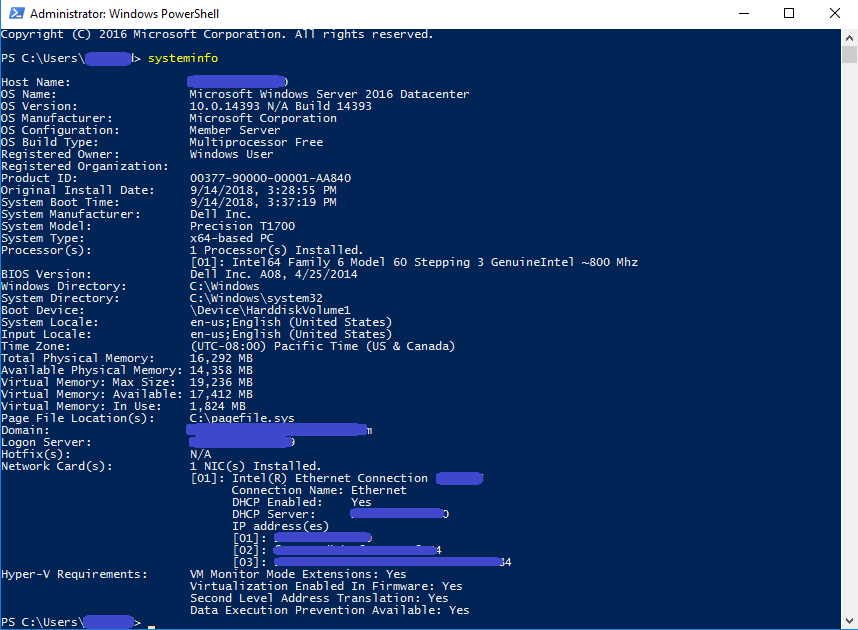
-
Run ipconfig /all and save the output:
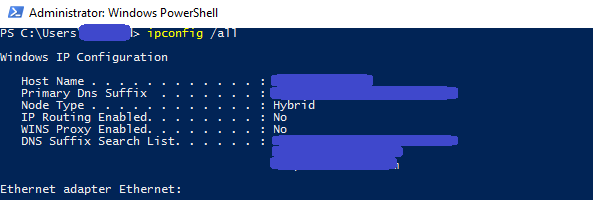
-
Run Get-WindowsFeature and save the output:

-
Run RegEdit and capture the value of the the HKEY_LOCAL_MACHINESOFTWAREMicrosoftWindowsNTCurrentVersion hive – this will show the exact version (BuildLabEx) and edition (EditionID) of Windows Server:
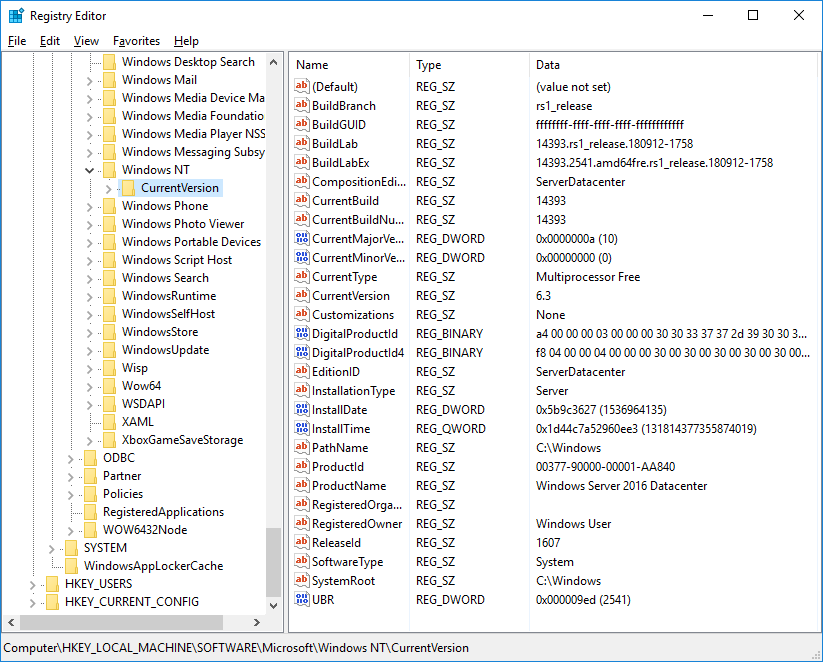
Before proceeding with the In-place Upgrade
-
Backup the Operating System, Applications, and Virtual Machines.
-
Shutdown, Quick Migrate, or Live Migrate all Virtual Machines running on the server - Virtual Machines cannot be running on the server during In-place Upgrade.
Upgrade
-
Locate the setup media for Windows Server 2019
-
Run setup.exe by double-clicking it:
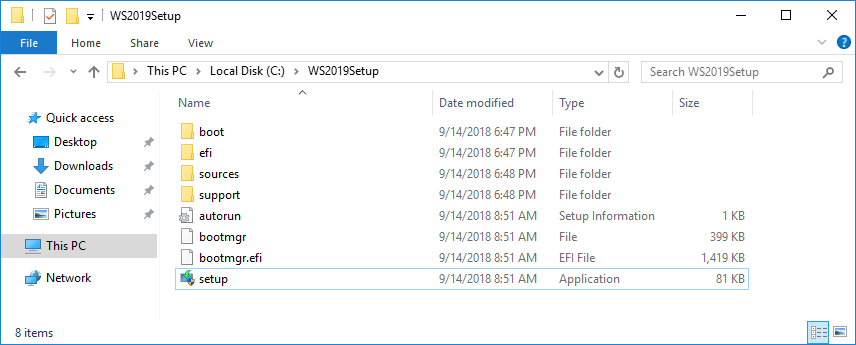
-
Click Yes to enable setup to proceed:
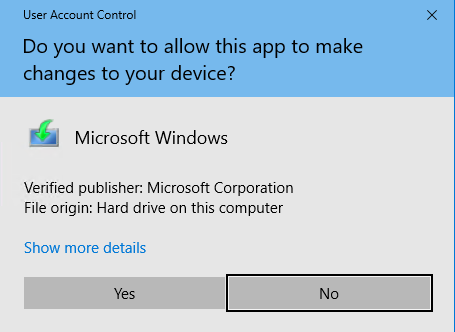
-
For internet-connected devices, we recommend the Download updates, drivers and optional features option. Click Next:
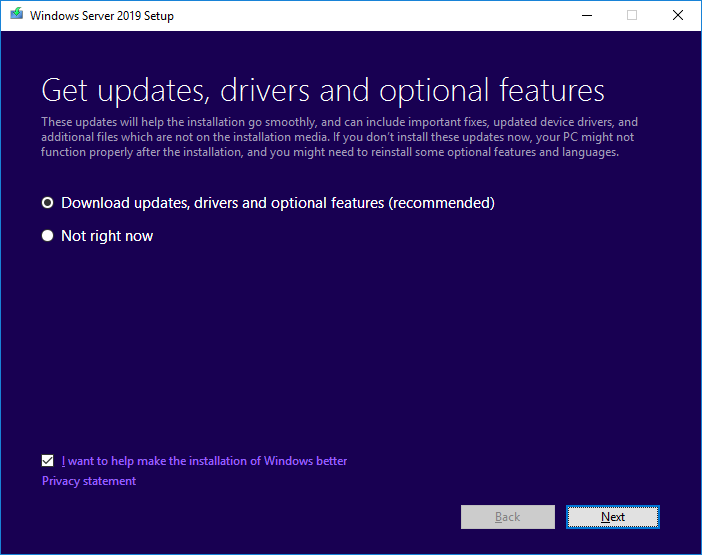
-
Setup will check the configuration of your computer – please wait:

-
Depending on the distribution channel that you received Windows Server media from (Retail, Volume License, OEM, ODM, etc.) and the license for the server, you may be prompted to enter a licensing key to proceed.
-
You will be prompted to select the image of the Edition to upgrade to. Then click Next:
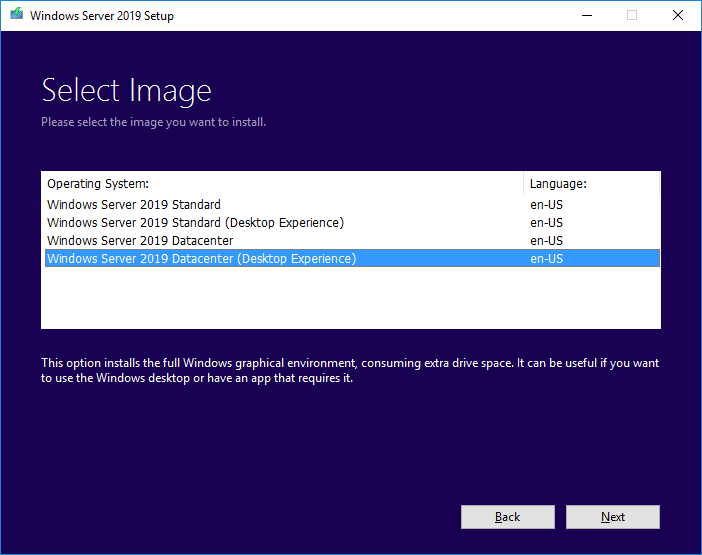
-
Depending on the distribution channel that you received Windows Server media from (Retail, Volume License, OEM, ODM, etc.) you may be presented with different license agreements. Click Accept:
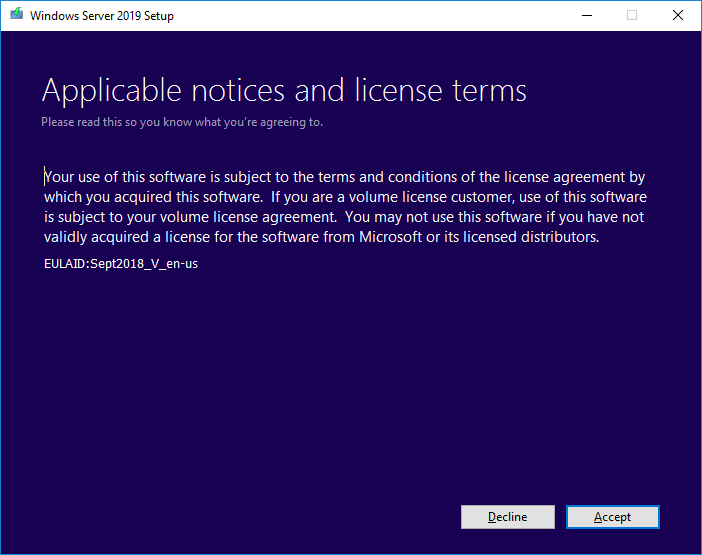
-
For In-place Upgrade, select Keep personal files and apps, and then click Next:
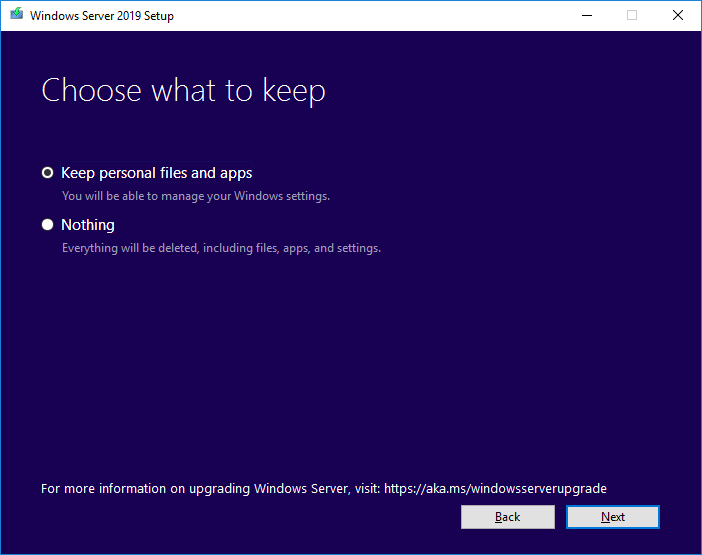
-
When the analysis phase is complete, setup will prompt you to click Back to change choices, or to proceed with the In-place Upgrade. Click Install:
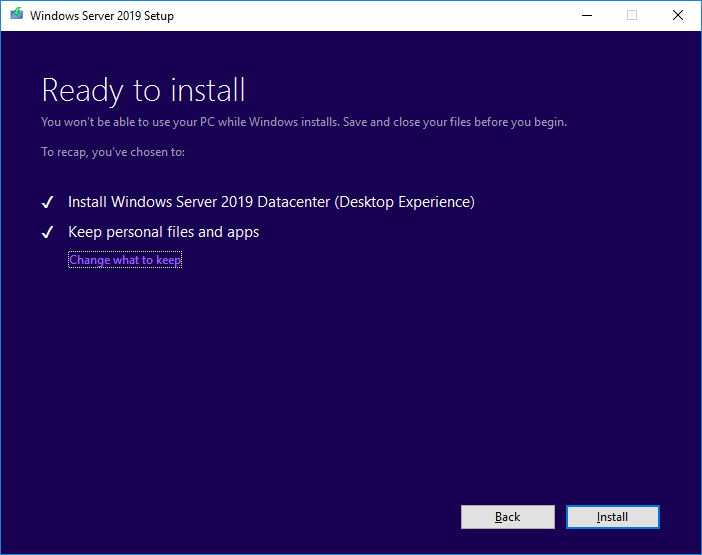
-
Setup will proceed with the In-place Upgrade, and then the server will reboot:
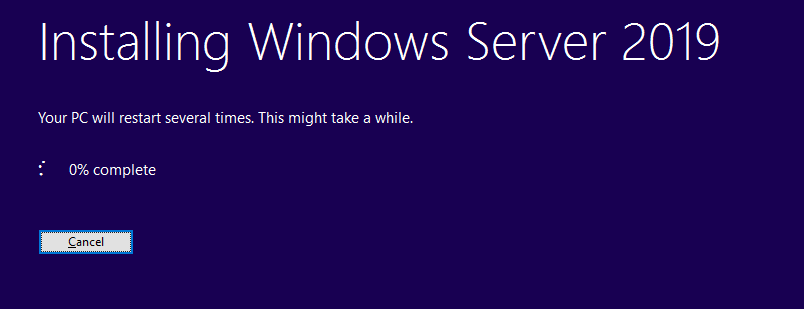
- Setup will complete and the server will reboot.
Post-upgrade
-
After Setup has completed installing and rebooted the sever, login to check that the server has been successfully upgraded. If you selected Windows Server 2019 Standard or Datacenter Desktop Edition, you should see the Server Manager window:
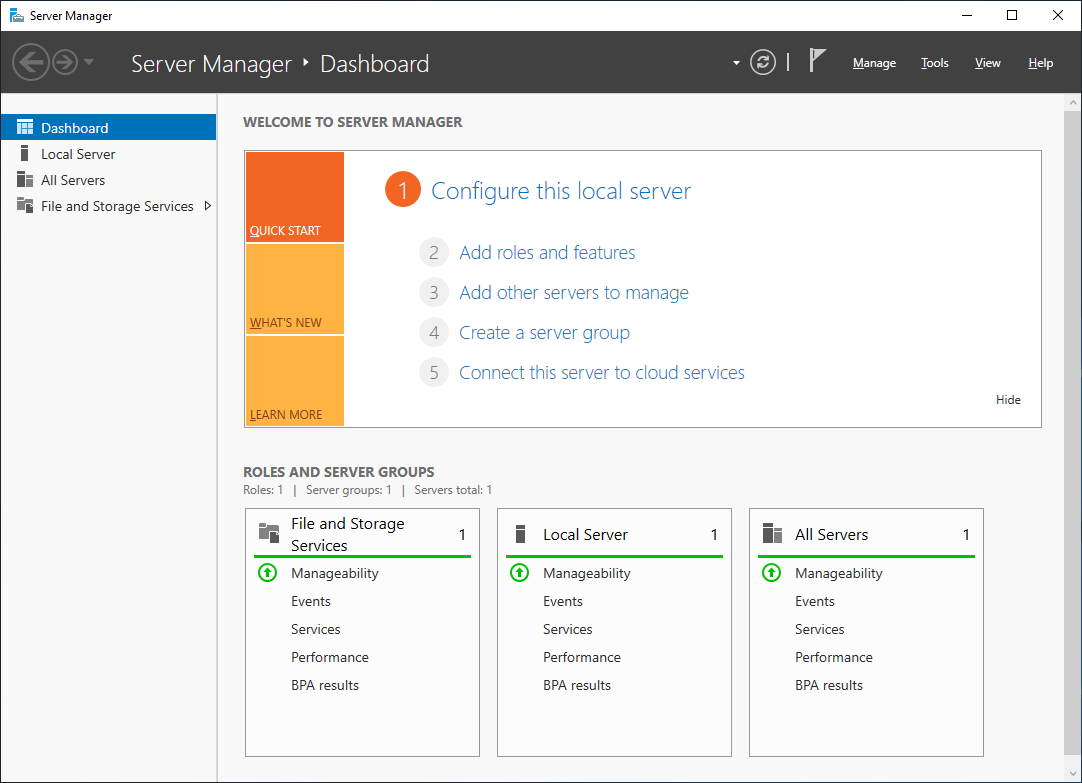
-
Run RegEdit and check the value of the HKEY_LOCAL_MACHINESOFTWAREMicrosoftWindowsNTCurrentVersion hive – the version should be successfully updated to Windows Server 2019.
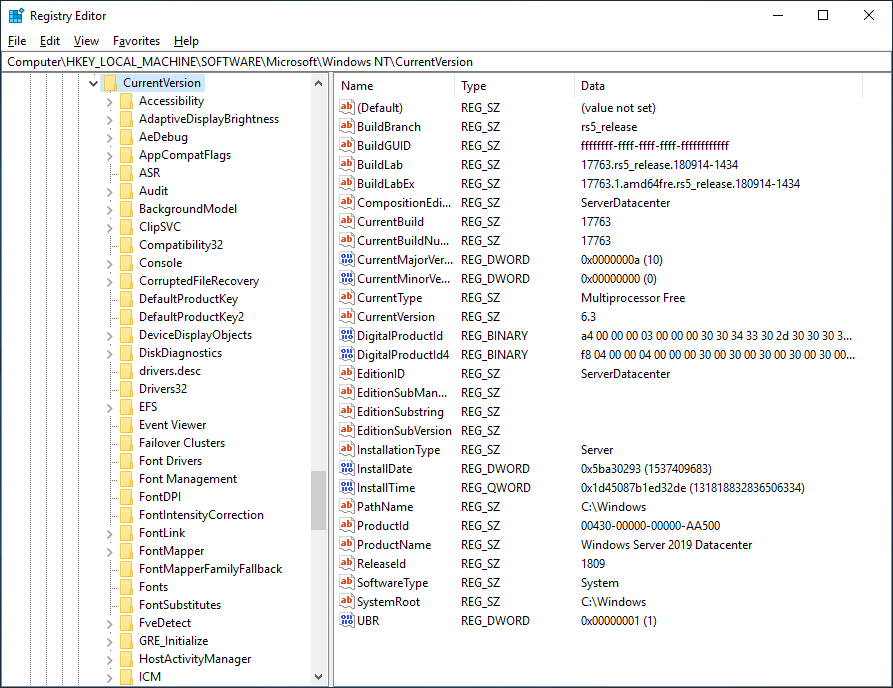
-
Check that applications are running and that client connections to the applications succeed.
-
If you believe that there has been an issue upgrading you server, you should copy and Zip the %SystemRoot%Panther (usually C:WindowsPanther) directory and contact support.
以上是关于【Windows Server 2019】DNS服务器的配置与管理——安装DNS服务的主要内容,如果未能解决你的问题,请参考以下文章
【Windows Server 2019】DNS服务器的配置与管理——DNS反向解析
科普Windows Server 2019 DNS域名解析服务器安装部署(DNS)